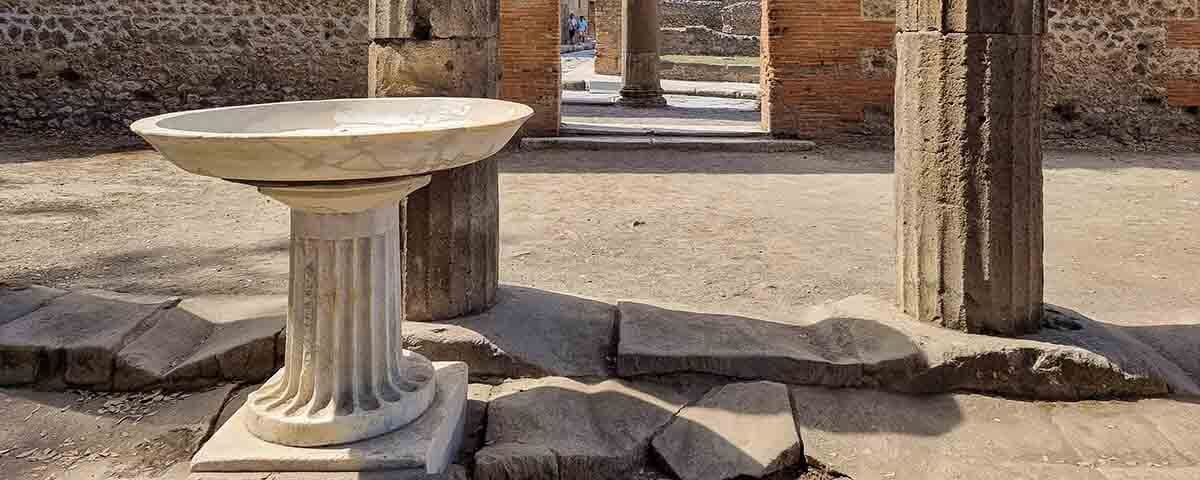
The year was 79 when Roman writer and military man Pliny the Elder retired to his study to read, following a cold bath and a light meal. Soon after, his attention turned to a cloud that had a very unusual shape and color. He realized that Vesuvius had erupted and was spewing huge puffs of lava and ash into the sky.
Moved by curiosity and wanting to help those who were trapped, he crossed to the other side of the Bay of Naples by boat, where he died, most likely asphyxiated due to inhaling the volcanic gases. Centuries later, it would be discovered that the eruption that ended the life of this Roman writer had also devastated several cities and that some of them were very well preserved.
Excavations and archaeological studies of the city of Pompeii, which was trapped in time after the eruption, have allowed us to get to know more about what life was like in ancient Roman cities. They have shown us many things, such as what the organization of cities and houses two millennia ago was like, and how they were quite similar to today’s.
Cardo and Decumanus: what were Roman cities like?
While it is difficult to define just one rule for all the cities that the Romans came to build over centuries all around the Mediterranean and beyond, the truth is, many of them did follow a very clear pattern.
As they evolved, Roman cities started to be organized around two main streets: Cardo and Decumanus, which ran from north to south and east and west, respectively. Their meeting point was the forum, the central square where the political, social, economic, and cultural life of Roman society took place. The most important buildings (often intended for political and public activities) looked out onto the forum, and shops and artisans’ stalls sprang up around them.
The rest of the city grew out from this center following a grid sort of layout, with streets that lined up parallel to Cardo and Decumanus. Along these streets, there were buildings offering all kinds of services: thermal baths, theaters, amphitheaters, shops, and of course, housing.
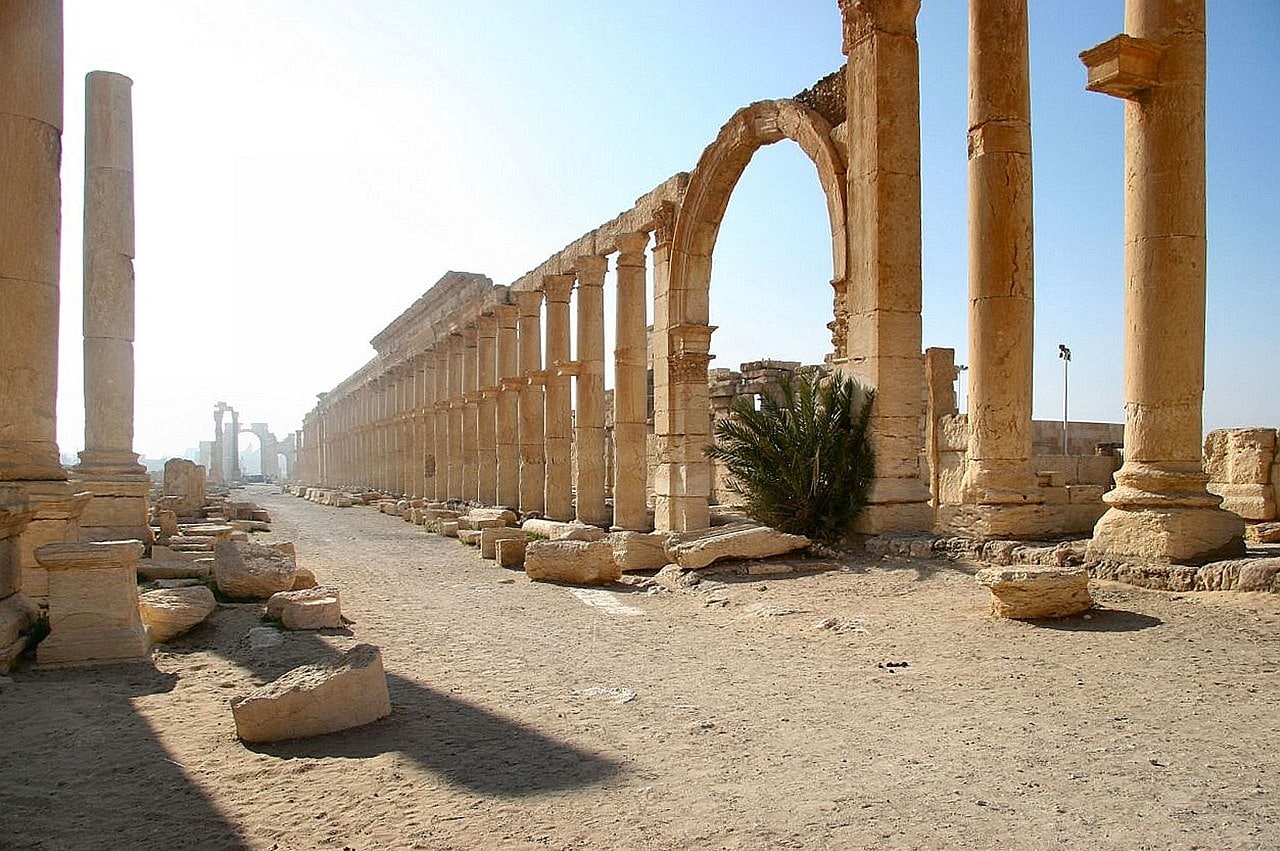
Decumanus in the Roman city of Palmyra, Syria. Zeledi (Wikimedia Commons).
The organization of Roman cities is well-known, thanks to documents from the time and cities that still have the same structure. Pompeii, however, takes us even further: the ash immortalized all kinds of details of everyday life, from remnants of the food consumed before the eruption to the vessels in which they were kept. Thus, in recent decades, all kinds of discoveries have been made about what the day-to-day life of the inhabitants of this Roman city was like.
They had an active recycling network
The citizens of Pompeii accumulated their garbage at various points in and outside the city. But they didn’t do this just to get rid of it: different studies have shown that they organized and classified it for subsequent recycling and reuse.
Among the waste found in these dumps were tile and ceramic pieces. These same remains, for instance, make up many of the walls in the city’s houses, which were then covered with plaster. The same goes for other types of waste that were easily reusable within the walls. This way, the cities of Pompeii can teach us a lot about circular economy and other ways of managing waste.
“For the most part, we don’t care what happens to our trash, as long as it’s taken away. What I’ve found in Pompeii is an entirely different priority,” Allison Emerson, Professor of Classical Studies at Tulane University (New Orleans, USA), explains to The Guardian. “This point has relevance for the modern garbage crisis. The countries that most effectively manage their waste have applied a version of the ancient model, prioritizing commodification rather than simple removal.”
The middle class was fighting for their social status
Most of the records kept from the Roman era refer to leaders and the upper classes. However, there is not as much information about the middle and lower classes, despite the fact that they accounted for most of the population in cities.
A recent discovery has allowed us to reconstruct how the middle classes lived more accurately; these hardworking people tried to improve their quality of life and move up the social ladder. In one of the houses in Pompeii, some decorated rooms were discovered where valuables were found; other simpler ones were filled with everyday items.
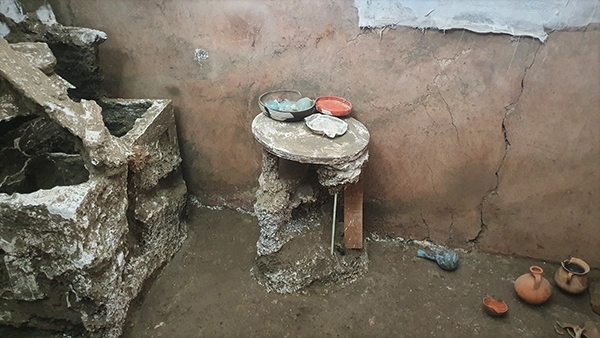
Finds in a middle-class house in Pompeii. Archaeological Park of Pompeii
Among the former, there are bronze and glass objects, as well as an incense burner in perfect condition. The latter includes vases, amphorae, and dishes that attest to everyday use.
Years earlier, a room measuring about 16 square meters was also found where a family of lower social rank, probably slaves, had lived. In it were three beds and various personal belongings, a small window, and smooth walls with no decor. The difference between these rooms and the large villas of the time shows how inequality was reflected in housing – this is still true of today’s cities.
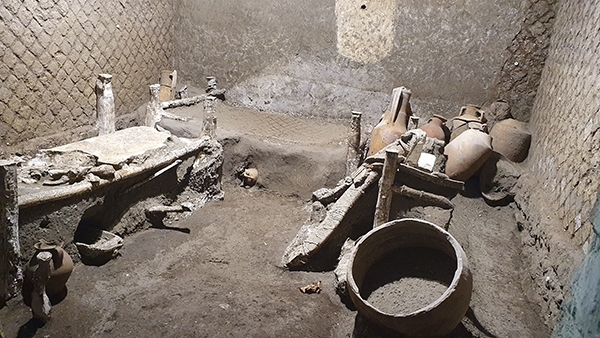
Remains of a room belonging to people of low social class, most likely slaves. Archaeological Park of Pompeii
“This is a window into the precarious reality of people who seldom appear in historical sources that were written almost exclusively by men belonging to the elite, and who as a result risk remaining invisible in the great historical accounts,” said Gabriel Zuchtriegel, Director General of the Archaeological Park of Pompeii.
They had street food stands
The inhabitants of Pompeii and other cities in the area, encouraged as they were by the mild climate of the Bay of Naples, would enjoy meals outdoors. We know this thanks to historical and literary records, paintings, and the archaeological remains of thermopolia (or ready-made food stands).

A thermopolium in Pompeii. Archaeological Park of Pompeii
According to archaeologists, the so-called Thermopolium of Regio V was a place where food was sold to the city’s middle and lower classes. Remains of containers found in the vicinity show that Pompeiians enjoyed hot takeout food.
While there are remains of other thermopolia, this one is well-preserved, with its bar, the areas where food was kept warm, and decorations, which were based on frescoes of animals, all in very good condition.
They used pedestrian crossings
The ruins of Pompeii have also shown us that the city’s inhabitants had a system of raised blocks to cross streets without having to walk on the roadway. These blocks were far enough apart that the horse-drawn carriages could pass over them without any problems.
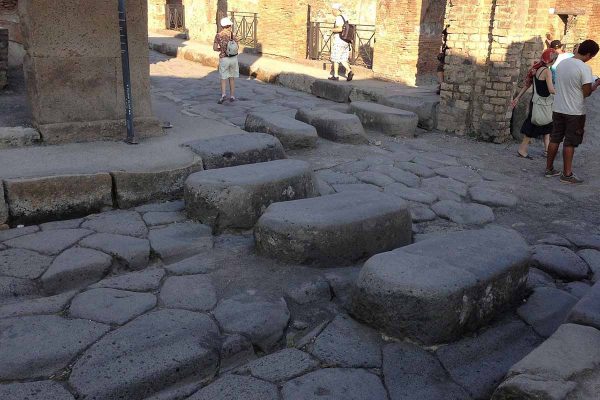
Pedestrian crossing in Pompeii. Xerti (Wikimedia Commons)
It is believed that these crossings in Pompeii are the forerunners of today’s oldest surviving crosswalks. This is yet another example of how Roman cities and their organization have influenced (and continue to influence) the cities we live in today.
Main picture: Jonne Mäkikyrö (Unsplash)





There are no comments yet